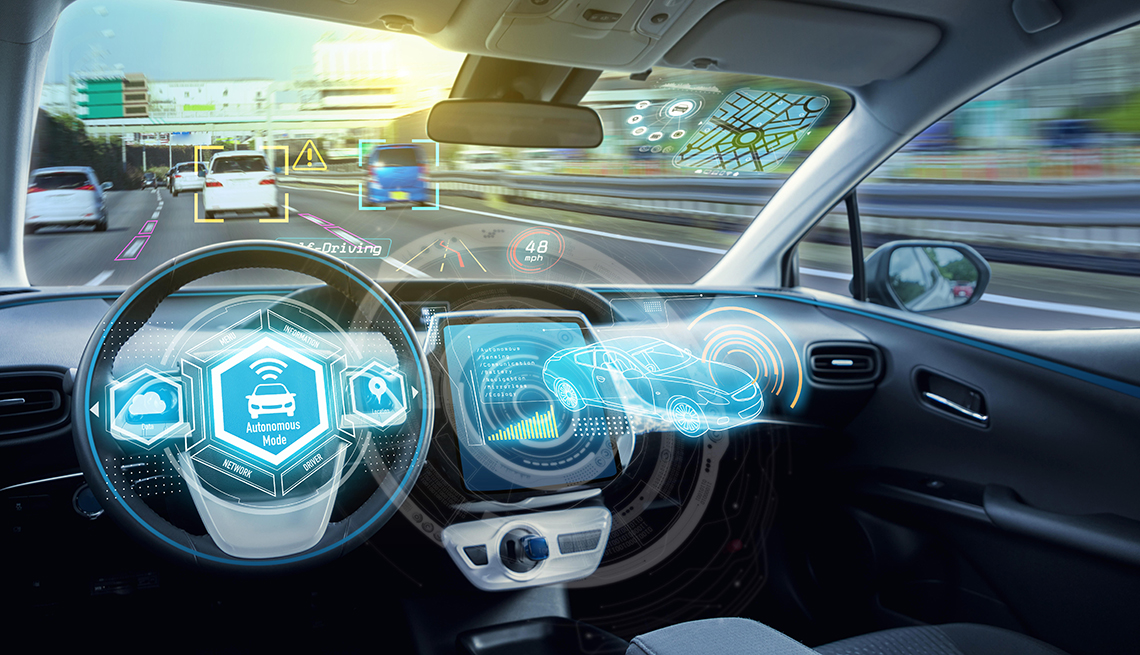Autonomous Cars for Better Safety

Car producers compete who will launch will launch autonomous car first. Society expects them to be safer and greener than today's vehicles. However, ethical questions like who will be responsible for collision or how to prevent cyber attacks are yet to be answered.
It all started with an "American miracle"
Humanity dreams of autonomous cars for almost a century. The year of 1925 is considered to be the beginning of an "autonomous" era when former US Army designer Francis P. Houdina assembled a huge antenna to legendary American Chandler naming his project the American Wonder.
Although it was not an autonomous vehicle from today's perspective, even if the driver didn´t have to sit inside. In fact, it was a big remote-control car which still relied on human factor and not the artificial intelligence in controlling. Eventually, the American Wonder ended up infamously when it collided with another vehicle.
In the fifties, cars which were coordinated according to roadside detectors signal were tested. Two decades later in the 1970s, Japan made another technological breakthrough when the first intelligent vehicle moving on the marked white lines at 30 km / h was developed.
Autonomous cars ride on today's roads
Even if today media address fully autonomous cars as the music of the future, it is a fact that current vehicles are autonomous to a greater or lesser extent. International classification of cars determines the level of vehicle autonomy. There are currently six levels starting from zero to five.
Zero-level cars such as The Fiat Punto have to be fully operated by a driver while Level Cars 1 (Kia Rio, Suzuki Swift) are partially operated by various assistants such as adaptive cruise control or automatic parking. Level 2 vehicles (Audi A6, BMW 6 GT) can react autonomously in emergency situations when, for example, they can brake in a traffic. Still a driver must always have his hands on the steering wheel.
Currently, there are vehicles with the highest level of autonomy at level no. 3. The car is already attributed to artificial intelligence, starting to think for the driver who doesn’t have to control the steering wheel. Representatives of this category are Tesla S or Audi A8.
Some car producers promise to launch the fourth level cars next year already. Vehicles will be able to move without driver intervention, who will become a passenger. Cars will be able to move on a pre-planned route, but the driver will still be responsible for driving in the city. The final fifth category should introduce fully autonomous cars capable of driving independently under all circumstances.
Interconnected cars depend on communication
The phrase "autonomous cars" is already an established term, but it is also linked to so-called interconnected cars.
Indeed, intelligent vehicles should not only be autonomous, but also be able to communicate with each other. Thus, the ultimate goal is not only the communication between vehicles (V2V vehicle to vehicle) but also between the entire infrastructure (V2X vehicle to everything).
Interconnected vehicles should communicate with the cloud as well as pedestrians, traffic and traffic lights. They should be equipped with GPS sensors, cameras, radars and lidars (laser radars that use 3D modulation to recognize objects on the road).
It is, therefore, logical to expect that the nature of infrastructure around us will adjust to such technological change. Automobile country Germany is already testing intelligent traffic lights and cars which should be equipped with communication sensors and modules, making the junctions more manageable. These technologies will significantly reduce congestion. The traffic light could, for example, assist the driver or advise him to adjust the speed to catch a green light in the best possible way.
Safety is the most important thing
A few years ago, the initial idea of autonomous cars didn’t meet with much of an enthusiasm from drivers’ side. According to prof. Tatiana Kováčiková from the University of Žilina, we should mainly consider the introduction of intelligent cars as the technology that could improve our safety on the roads.
“Security is the reason for introducing interconnected and fully autonomous vehicles. Approximately 90 percent of all accidents are caused by a driver, while one third of them is because of the lack of driver’s attention. The driver's influence on traffic safety is therefore significant,” said Tatiana Kováčiková for Itapa.sk.
Many hope for a positive impact of autonomous cars on the environment too. An intelligent car will be able to handle consumption more effectively, increase smooth traffic flow and eliminate the parking problem. Yet, prof. Kováčiková states that new technologies solely won’t assure ecological transport.
If we are witnessing crowded journeys with single-passenger cars, we can’t expect the situation to change only by introducing autonomous cars. This should go hand in hand with the so-called carsharing or carpooling. Car ownership still signifies certain status, whereas the trend in Western Europe is shifting, where mostly young people starting to look for alternative ways of transport.
Ethical questions are yet to be answered
Autonomous vehicles would also bring quite radical social changes when professions like taxi driver or truck driver would no longer be needed. However, similar concerns have already emerged during the Great Industrial Revolution in the 18th century, when people protested against machines that were about to take their jobs. Yet, the processes of automatization have brought social and economic progress in time.
A model example of an ethical issue while driving an autonomous car is peculiar question, what to do in situation when the collision cannot be prevented. There is still ongoing discussion about who will be responsible in this case. Today the answer is simple- the driver is responsible in most of the cases. However, the complexity of ethical questions in autonomous car industry has to be solved from the perspective of a car manufacturer, software developer, telecommunications operator as well as the end-user.
How to protect IT car security
According to prof. Kováčiková, cyber security will become increasingly important as the IT will be one the most important aspect in smart cars. Therefore, she suggested three key points:
1. Information leakage and security attack prevention.
2. Detection and appropriate response to possible attack.
3. Minimizing the impact of the attack and return to the original state.




















